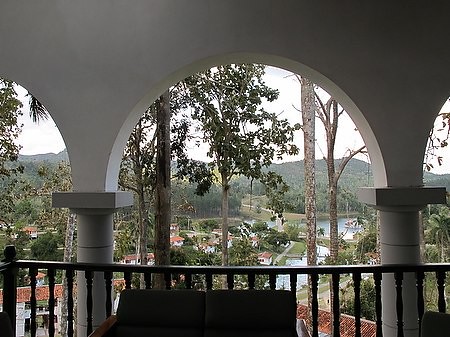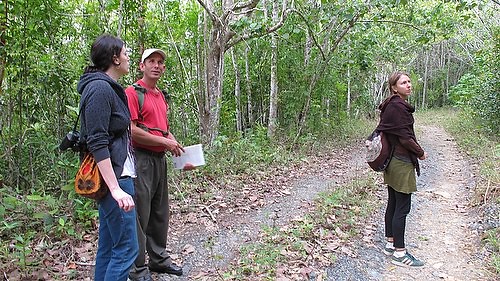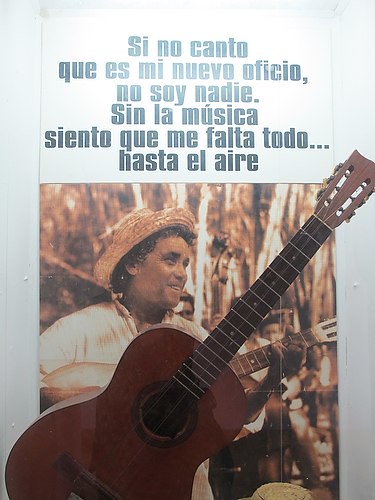PINAR DEL RIO, CUBA — It had been two months since I packed away my car keys and began leaving the driving to otros. And as much as I’ve enjoyed traveling with the locals via camión in Mexico and guagua in Havana (regional words for bus), I’ll admit I felt a thrill when Ernesto at CubaCar Rental Service handed me the key to my grey Hyundai and wished me a buen viaje.
I headed first for the Malecón, the famous seawall that stretches the length of the city. The deep blue waters of the Straits of Florida stretched out placidly to the northern horizon; only yesterday they were crashing over the Malecón and flooding the grand, battered buildings along the waterfront. Today, however, skies were blue, and once I found the Autopista Nacional, it was smooth sailing.
My itinerary was altogether too cramped: two days in the western province of Pinar del Rio, with its charming villages, mountains and internationally recognized national biosphere preserves; a day for the Bay of Pigs, site of the infamous CIA-sponsored invasion in 1961, now a tranquil seaside tourist zone; and a day for Cienega Zapata, another internationally recognized preserve, this one in the coastal wetlands of the southern peninsula near the Bay of Pigs. Nonetheless, it was the time I had, and I resolved to make the most of it.
The first stop was Las Terrazas, high in the Sierra del Rosario Biosphere. I had booked a room at Hotel Moka at the heart of the community, the closest thing Cuba has to an eco-resort. I arrived just in time to catch a birdwatching tour with a guide named Miguel. The three-hour hike yielded some spectacular glimpses into the island’s many endemic populations and a fascinating story, besides.

Highlights of the hike included sightings of the green Cuban woodpecker, the spectacular Cuban trogon and some curious pod-shaped vines I’ve never even seen photos of before. But perhaps the best part was discovering that this lush forest was regenerated from devastated lands not so many years ago, with the help of the people who once helped destroy it.
The region was settled in 1792 by French refugees from the uprisings in Haiti. They created coffee plantations, which provided a good living for a few, for awhile. But eventually the coffee plantations failed, and as in much of pre-Revolution Cuba, local guajiros or country people became carboneros, manufacturing charcoal from the surrounding forests. It was hot and laborious work and eventually denuded the surrounding forests, but it provided the locals with a hardscrabble subsistence.
In 1967, as part of a far-reaching rural development campaign, the Castro government launched an ambitious reforestation project on 5,000 hectares of barren hillsides, hiring the local guajiros to plant trees instead of cutting them. The project was designed to build up the soil and reverse some of the erosion that had devastated the area, and the terrace-style plantings encircling the hillsides gave rise to the name of the model community that was developed in 1971 to provide workers with an alternative to the wood-and-thatch shacks that most lived in, scattered among the hills.
Las Terrazas contained a school, a clinic, shops and other services that were practically nonexistent in these parts before the Revolution. The picturesque red-tiled, whitewashed buildings ring a placid lake and rise up the piney hillside in terraced style. Some of the homes are artist villas, and some provide an opportunity for travelers to stay with the local families instead of at the hotel, a fact I discovered too late to take advantage of it. The hotel, however, is beautiful, and was well worth the splurge (about $100 a night).
Other highlights in the area include the pools and waterfalls of Baños del San Juan; the spectacular views from the ruins of Cafetal Buena Vista; and the home of the late Polo Montañez, creator of the platinum-selling album Guajiro Natural.
Montañez made his way into my consciousness – and my heart – in 2001 on a visit to Cartagena, Colombia, where he had just recorded his first album and achieved international fame. Just a year later, he was dead, victim of a car accident in the hills of Pinar del Rio. The simple poetry of his lyrics and the infectious rhythms of the Cuban countryside contributed to his meteoric rise to fame, which has not diminished over the years.
Montañez was discovered by a French tourist with connections in the music industry, according to his brother Luis, whom I met at his simple whitewashed house at Las Terrazas, now a museum. Luis provided me with a glimpse into his brother’s life as the child of carboneros, a lover of the Cuban countryside who had never even ridden on a plane until he was in his 40s.
I ended up buying all three of his CDs, which provided a beautiful soundtrack for the rest of my road trip. I wish I could share it with you now but my connection is just too slow here … meantwhile, here´s the tour, and a link to Polo’s MySpace page – with music, video and his last blog post.
Created with Admarket’s flickrSLiDR.

